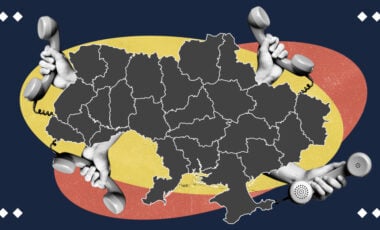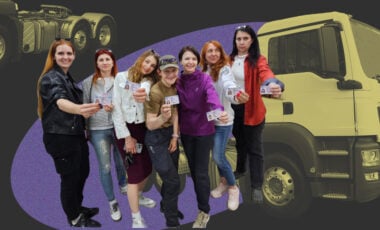UAnimals organizes international performance to raise awareness of Russia's ecocide in Ukraine

Photo: UAnimals
Ukrainian activists from the humanist movement UAnimals organized an international performance to raise awareness among Western European countries of Russia's ecocide against the Ukrainian environment. As a powerful reminder, they brought tears to animal statues in Spain, Britain, Poland, and Portugal.
UAnimals reported this.
What is the problem?
It should be noted that Ukraine faced environmental consequences due to the destruction of the Kakhovka HPP, the worst man-made disaster since the accident at the Chornobyl nuclear power plant. Then hundreds of animals died, swallowed by the high water.
Thus, losses of 1.4 billion euros have been caused in the forest sector, and 20% of nature conservation areas are under threat. All living things around die due to fires arising from shelling.
In addition, Ukraine is currently the most mined country in the world. Animals come across streamers and landmines left in plantations and forests by the Russian invaders.
Therefore, war kills not only people; it destroys animals, plants, and the entire environment. Currently, 600 species of animals and 750 species of plants are under threat of extinction in Ukraine. One-fifth of protected areas are in danger.
What is the solution?
To once again draw the attention of Western European countries to the ecocide that Russia is committing to the Ukrainian environment, the UAnimals movement held an international performance, adding tears to animal statues in Spain, Great Britain, Poland, and Portugal.
How does it work?
"The animal statues were "brought to tears' by the atrocities we face because of the Russian war. We did this performance to once again draw the world's attention to the daily suffering caused by Russia.
War kills not only people; it destroys animals, plants, and the entire environment. Crying animals across Europe symbolize sympathy, solidarity with Ukraine, and support in our fight against ecocide. We also expect this solidarity from people worldwide," says Olha Chevhaniuk, head of the international department of UAnimals.

Photo: UAnimals
They say that:
- The first performance took place in London, where tears appeared on the animals of the World War II Memorial.
- Later, they noticed that the stone bear Mieszko was crying in Warsaw.
- In Valencia, Spain, the Cat and Dog Memorial for Abandoned Animals became even sadder than usual.

Photo: UAnimals
- The roe deer of Sintra, Portugal, were also brought to tears.

Photo: UAnimals
During the year of the full-scale war, Russia caused almost 1.9 trillion hryvnias of damage to Ukraine's environment. According to the Minister of Environmental Protection and Natural Resources, Ruslan Strilets, nearly 500,000 hectares of the territory of Ukraine are currently under occupation or in the war zone.
2.4 million hectares of forests have already been cleared and need restoration. Under occupation are:
- ten national natural parks,
- eight reserves,
- two biosphere reserves.
For reference:
Since 2016, the animal welfare organization UAnimals has promoted humane values and saved animals from cruelty.
Since the beginning of the full-scale invasion, it has been saving animals from the war: evacuating, feeding, and treating them, as well as rebuilding shelters and helping nature parks.
In addition, the UAnimals movement launched an award for children's books promoting the humane treatment of animals.
Ukraine is also investigating 271 war crimes against the environment committed by the Russian Federation since the beginning of the full-scale war against our country. It also investigates 15 cases of ecocide.
According to Rubryka's article, the war presented significant obstacles for institutions focused on preserving nature. The destruction of natural resources that should be preserved for future generations is devastating. Despite this, there is a glimmer of hope. To learn more about who is responsible for protecting these resources, read Rubryka's piece on "Environmental disaster of a global scale: how the Nyzhnyodniprovskyi National Nature Park lives after the explosion at the Kakhovka Reservoir".
."

















































